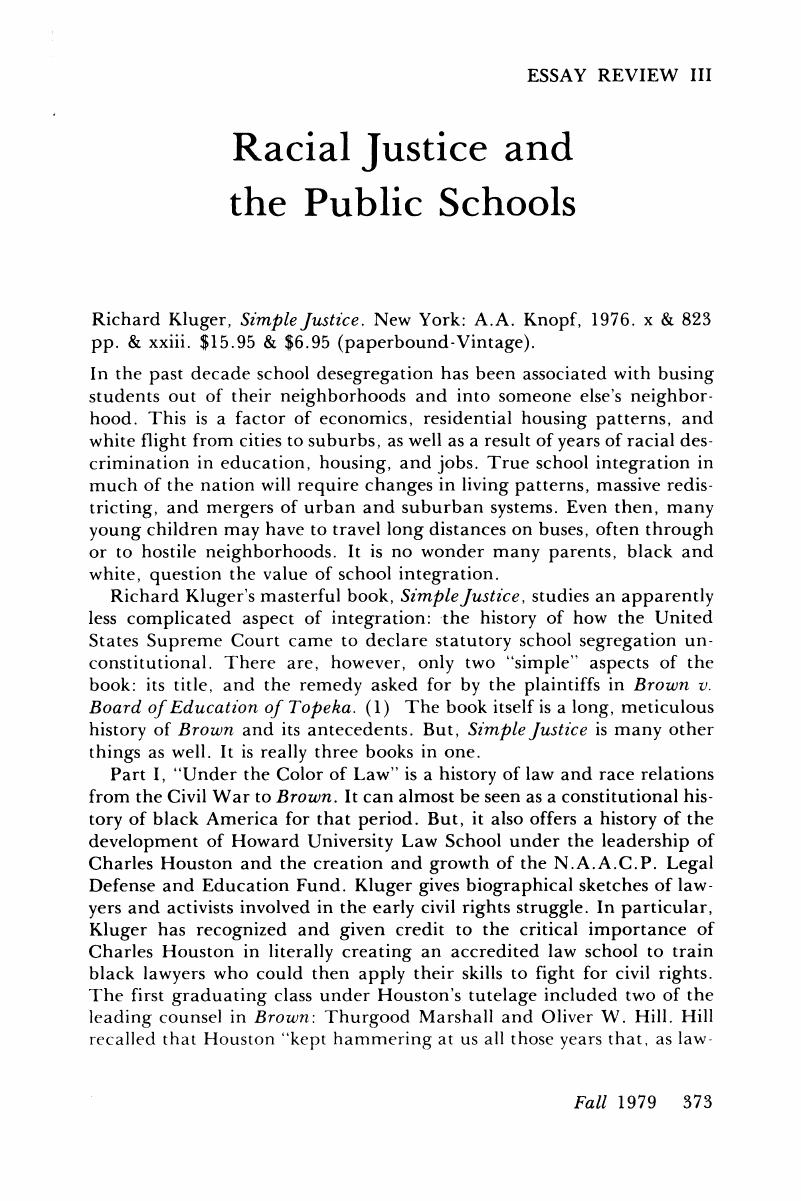No CrossRef data available.
Article contents
Racial Justice and the Public Schools
Published online by Cambridge University Press: 24 February 2017
Abstract

- Type
- Essay Reviews
- Information
- Copyright
- Copyright © 1979 by History of Education Society
References
Notes
1 Brown v. Board of Education of Topeka, 347 U.S. 483 (1954). The “simple” remedy asked for was that the plaintiffs be allowed to attend the “white” schools near their homes, and that segregated schools be declared unconstitutional.Google Scholar
2 Kluger, , Simple Justice, pp. 127–28. The best work available on Houston is McNeil, Genna Rae, “Charles Hamilton Houston (1895–1950) and the Struggle For Civil Rights,” unpublished Ph.D. thesis, University of Chicago, 1975.Google Scholar
3 Plessey v. Fergueson, 163 U.S. 537 (1896).Google Scholar
4 The cases involved were Missouri ex rel. Gaines v. Canada, 305 U.S. 337 (938): Sipuel v. Board of Regents of University of Oklahoma, 332 U.S. 631 (1948); McLaurin v. Oklahoma State Regents 339 U.S. 637 (1950); and Sweatt v. Painter, 339 U.S. 629 (1950).Google Scholar
5 The five cases were: Brown v. Board [Kansas, ]; Brigg v. Elliott [South Carolina]; Davis v. County School Board of Prince Edward County [Virginia]; Gebhart et al. v. Belton et al. [Delaware, ]; and Boiling v. Sharpe, 347 U.S. 497 (1954) [District of Columbia]. Because Boiling v. Sharpe came from the District of Columbia it was regarded as a case involving federal jurisdiction and the 5th Amendment, rather than state issues and the 14th amendment. Thus, although decided on the same principles as the other four, and argued at the same time, it required a separate opinion.Google Scholar
6 Kluger, , p. 408.Google Scholar
7 Ibid., p. 304.Google Scholar
8 Ibid., pp. 656, 698, 707.Google Scholar
9 Ibid., pp. 35, 29, and 55; Slaughterhouse Cases, 16 Wallace 36 (1879); Cumming v. Richmond County Board of Education, 175 U.S. 528 (1899).Google Scholar
10 Berman, Daniel, It Is So Ordered (New York, 1966).Google Scholar
11 Greer, Colin, The Great School Legend (New York, 1972), p. 131.Google Scholar
12 Kluger, , p. 747.Google Scholar




